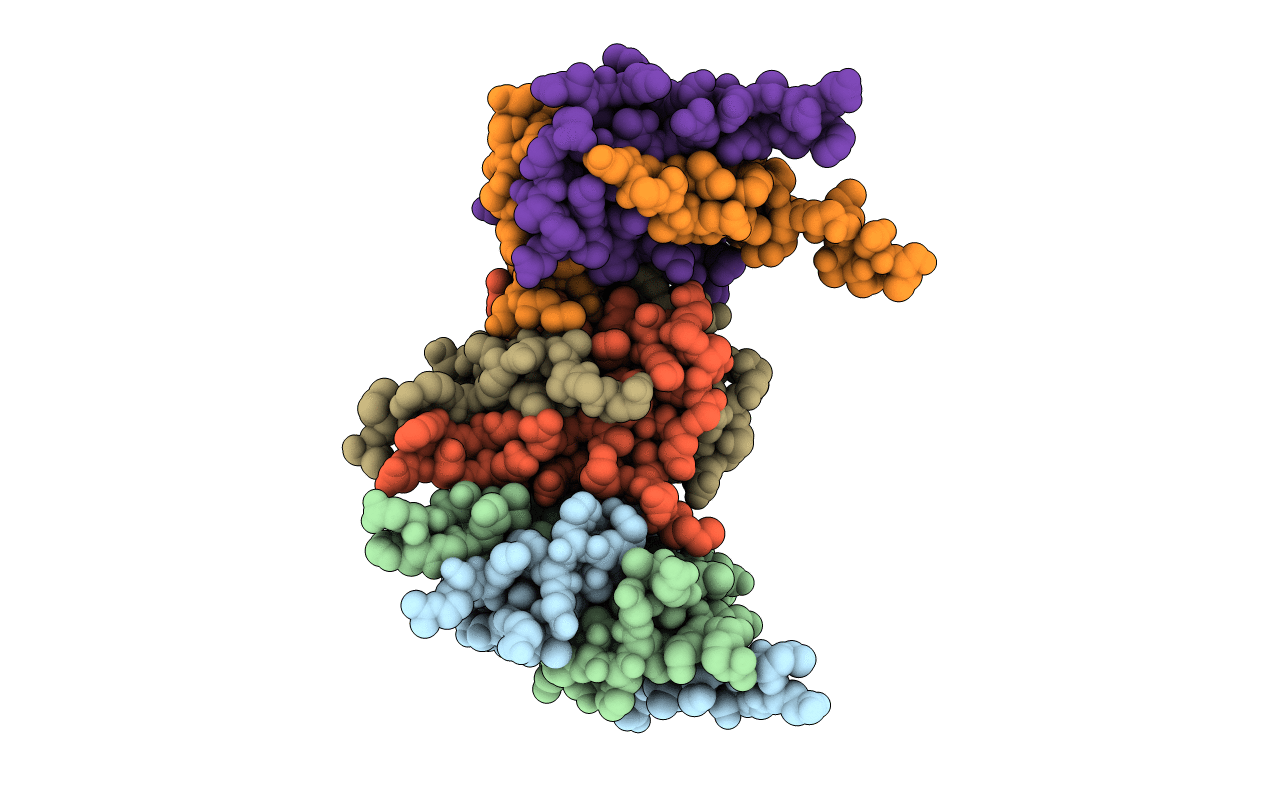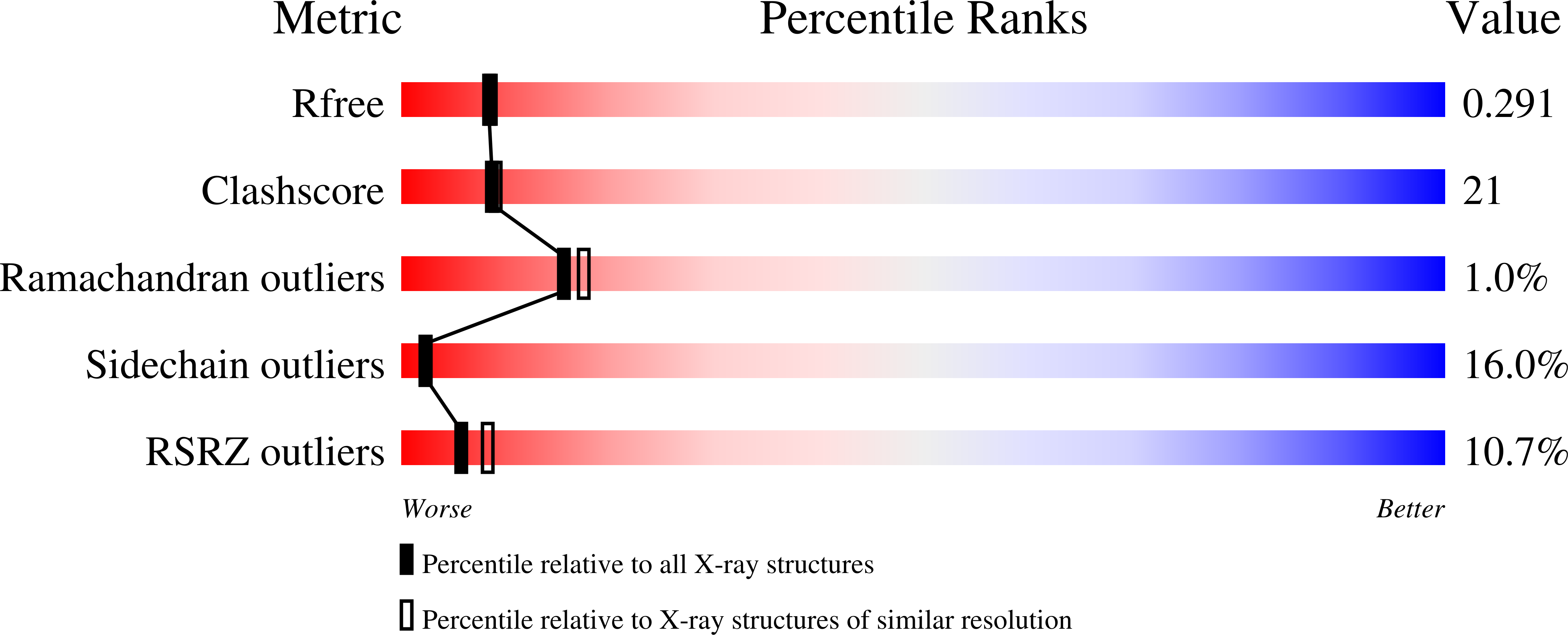
Deposition Date
2006-01-18
Release Date
2006-02-07
Last Version Date
2024-02-14
Entry Detail
PDB ID:
2FQM
Keywords:
Title:
Crystal structure of the oligomerization domain of the phosphoprotein of vesicular stomatitis virus
Biological Source:
Source Organism:
Vesicular stomatitis Indiana virus (Taxon ID: 11277)
Host Organism:
Method Details:
Experimental Method:
Resolution:
2.30 Å
R-Value Free:
0.29
R-Value Work:
0.22
R-Value Observed:
0.22
Space Group:
P 41 21 2


